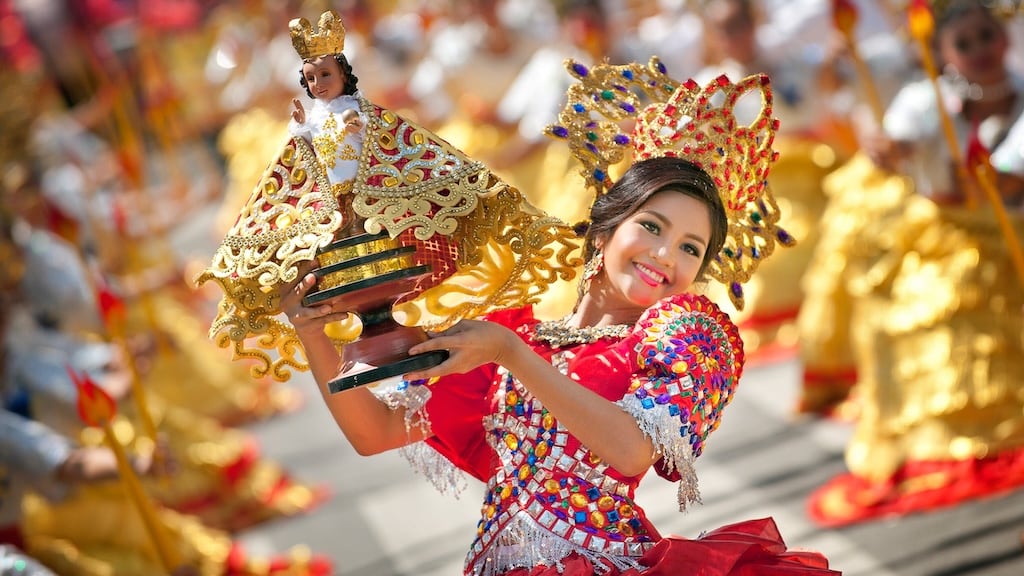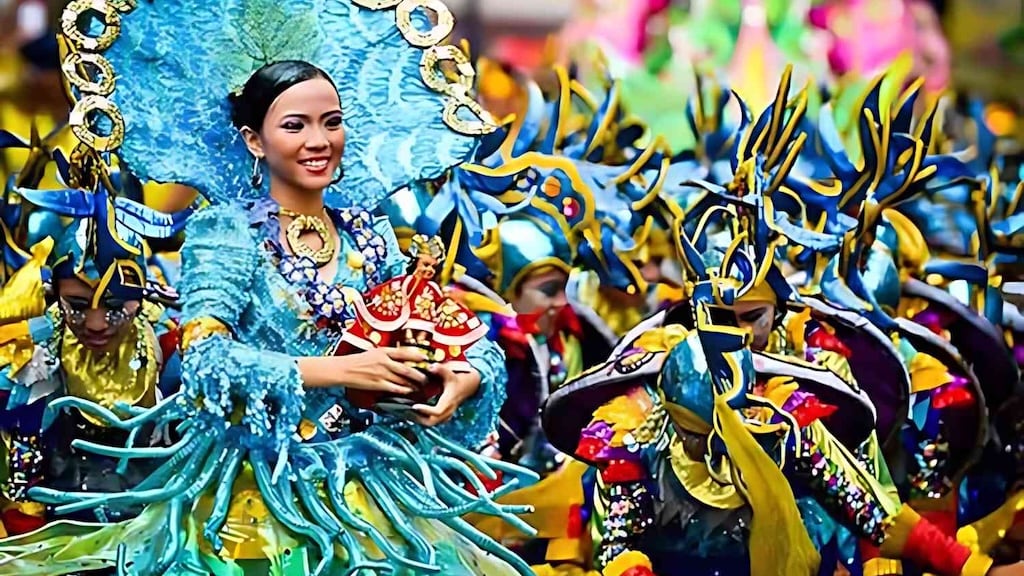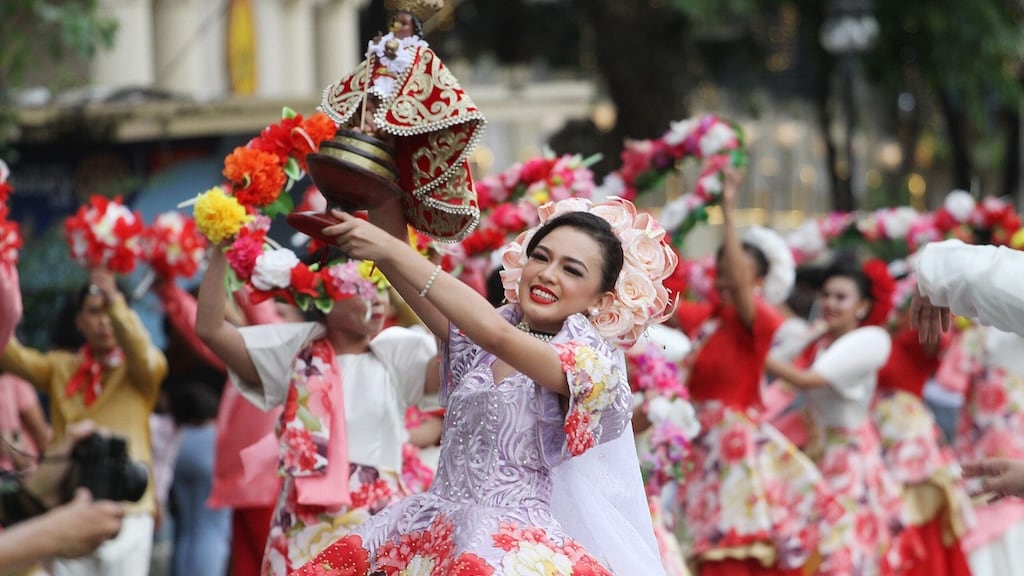Viva Pit Señor! The Electrifying Sinulog Festival of Cebu
The Sinulog Festival is the Philippines' most iconic and vibrant celebration, a grand spectacle of faith, culture, and joyous revelry that transforms Cebu City into a pulsating hub of energy every January. Honoring the Santo Niño (Child Jesus), this annual event draws millions of devotees and tourists alike, all united in a fervent display of devotion and thanksgiving. The Sinulog Festival in the Philippines is a kaleidoscope of color, sound, and movement, characterized by its rhythmic dance, elaborate costumes, and the resounding chant of "Pit Señor!" It is a deeply spiritual experience intertwined with a lively street party, offering a unique glimpse into the heart of Filipino Catholic tradition and the enduring spirit of its people.


A Legacy of Faith: The Festival's Historical Roots
The history of the Sinulog Festival is inextricably linked to the arrival of Christianity in the Philippines. In 1521, Portuguese explorer Ferdinand Magellan landed in Cebu and, as a symbol of friendship and conversion, presented an image of the Santo Niño to Queen Juana, wife of Rajah Humabon, the chieftain of Cebu. This small wooden statue of the Child Jesus became the first Christian relic in the Philippines and marked the beginning of the country's deep-rooted Catholic faith.
The Sinulog dance itself predates the arrival of the Spanish. It originated from indigenous rituals performed to honor pagan gods and animist beliefs. After the introduction of Christianity, this traditional dance evolved into a devotional act for the Santo Niño. The modern, organized Sinulog Festival, as we know it today, began in 1980. David Odilao, then Regional Director of the Ministry of Sports and Youth Development, is credited with organizing the first grand parade, transforming the religious observance into a massive cultural event that showcases Cebuano heritage and faith to the world. The festival's evolution reflects the Philippines' unique blend of indigenous traditions and colonial influences, creating a celebration that is both ancient and contemporary.
A Symphony of Senses: Activities and Events
The Sinulog Festival is a multi-faceted event that spans several weeks, culminating in the grandest celebration on the third Sunday of January. The festivities are a rich tapestry of religious solemnity and exuberant street parties.
Religious Activities: The festival is deeply spiritual, with a series of novena Masses leading up to the main day. A poignant fluvial procession sees the image of the Santo Niño paraded on a decorated boat along the Mactan Channel, followed by a solemn procession through the streets of Cebu City. These events draw massive crowds of devotees, many walking barefoot as a sign of penance and devotion.
Sinulog Grand Parade: This is the undisputed highlight of the festival. Thousands of participants, dressed in vibrant, elaborate costumes, perform the iconic Sinulog dance to the rhythmic beat of drums and native gongs. Contingents from various schools, towns, and organizations showcase their meticulously choreographed routines, transforming the city's main thoroughfares into a dazzling river of color and movement.
Cultural Shows and Competitions: Beyond the main parade, the festival features a variety of cultural events, including the Sinulog sa Kabataan (youth dance competitions), Sinulog Dance Crew finals, and the Festival Queen Coronation Night, where contestants showcase their beauty, grace, and dancing prowess.
Street Parties and Concerts: As the sun sets, Cebu City comes alive with energetic street parties, live concerts, and a festive atmosphere that extends late into the night. The air is filled with music, laughter, and the joyous shouts of "Pit Señor!"
Fireworks Displays: The festival often culminates in spectacular pyromusical shows, lighting up the Cebuano sky with a dazzling array of colors and patterns, providing a fitting end to the grand celebration.
The Dance of Devotion: Sinulog Customs
The customs and traditions of the Sinulog Festival are deeply ingrained in the Cebuano identity, reflecting a unique blend of indigenous and Catholic influences. The most central custom is the Sinulog dance itself. This ritual prayer-dance is characterized by its distinctive two steps forward and one step backward movement, mimicking the current (or "sulog" in Cebuano) of the river. It is performed as an act of worship and thanksgiving to the Santo Niño, often with participants holding candles and images of the Child Jesus.
Vibrant Costumes: Participants in the Sinulog Grand Parade don elaborate and colorful costumes, often adorned with sequins, feathers, and intricate designs. These costumes are not merely decorative; they are an integral part of the performance, adding to the visual spectacle and reflecting the festive spirit of the event.
"Pit Señor!": The fervent chant of "Pit Señor!" (short for "Sangpit sa Señor," meaning "to call upon the Lord") is heard throughout the festival. It is a powerful expression of devotion and a plea for blessings and miracles from the Santo Niño.
Religious Devotion: At its core, Sinulog is a profound expression of religious devotion. The festival is a testament to the deep faith of the Cebuano people in the Santo Niño, who is believed to be miraculous. Many devotees undertake personal sacrifices and acts of penance, such as walking barefoot in processions, to show their gratitude and to seek blessings.
Face Painting: Historically, face painting played a significant role in indigenous rituals, symbolizing warriors preparing for battle or a ritual. While its direct religious significance has evolved, elements of face painting can still be seen, connecting the modern festival to its pre-colonial roots.


What to Expect in Cebu City
Attending the Sinulog Festival in Cebu City is an exhilarating and immersive cultural experience. The festival takes place on the third Sunday of January, a time when the weather in the Philippines is typically warm and humid. Light, breathable clothing is recommended, along with comfortable walking shoes, as you will be doing a lot of walking and standing.
Cebu City becomes incredibly crowded during the festival, so it's essential to plan your accommodation and transportation well in advance. Many roads are closed for the grand parade, so public transport or walking are the best ways to get around. Be prepared for large crowds, especially along the parade route and in areas where street parties are held.
While the atmosphere is generally festive and joyful, it's important to be mindful of your belongings and to stay hydrated. The festival is a family-friendly event, but due to the crowds, it's advisable to keep children close. Beyond the festival, Cebu offers a wealth of attractions, including historical sites like Magellan's Cross and the Basilica Minore del Santo Niño, as well as beautiful beaches and islands nearby.
Conclusion
The Sinulog Festival is a truly magnificent event, a vibrant fusion of history, culture, and unwavering faith. It is a celebration that showcases the rich heritage of Cebu and the deep spiritual devotion of its people to the Santo Niño. From the mesmerizing Sinulog dance to the grand parades and fervent chants, the festival creates an atmosphere that is both electrifying and deeply moving. The Sinulog Festival in the Philippines is more than just a party; it is a powerful expression of identity, a testament to resilience, and a joyous affirmation of faith. To experience this extraordinary event is to witness the heart and soul of the Philippines. For more information, visit the official Sinulog Festival website: sinulog.ph.